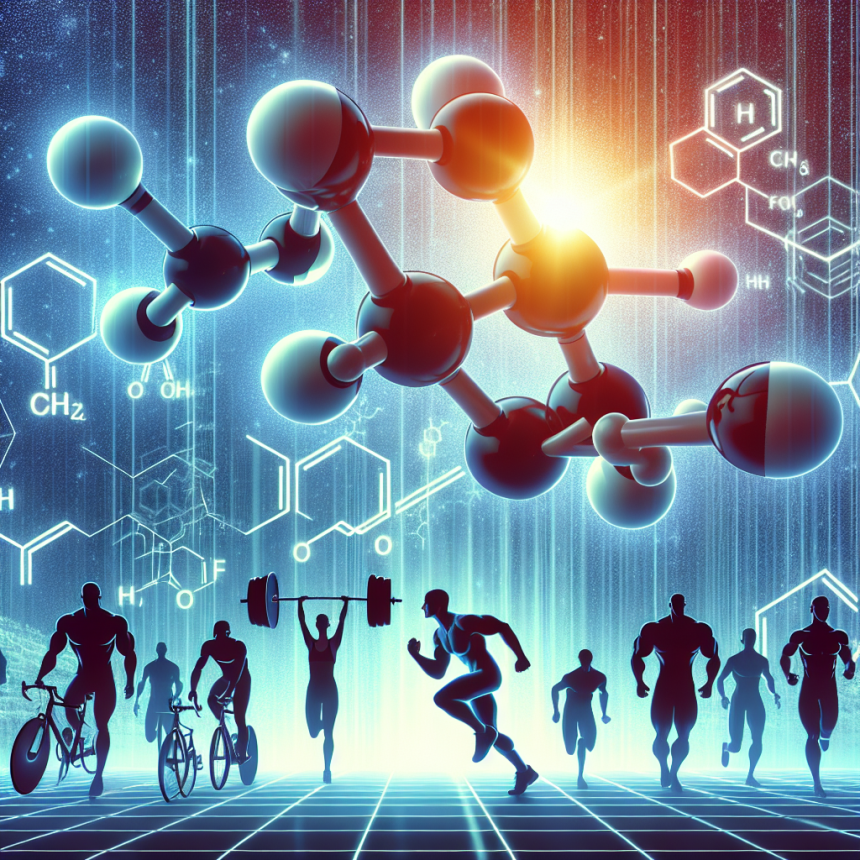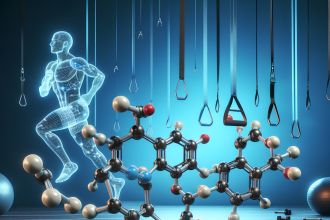-
Table of Contents
Exemestane: A Powerful Tool for Enhancing Athletic Performance
Athletes are constantly seeking ways to improve their performance and gain a competitive edge. While training, nutrition, and genetics play a significant role, the use of performance-enhancing drugs has become increasingly prevalent in the world of sports. One such drug that has gained attention in recent years is exemestane, a powerful aromatase inhibitor that has been shown to have potential benefits for athletes. In this article, we will explore the pharmacology of exemestane and its potential as a tool for enhancing athletic performance.
The Role of Aromatase Inhibitors in Sports Pharmacology
Aromatase inhibitors (AIs) are a class of drugs commonly used in the treatment of hormone-sensitive breast cancer. They work by inhibiting the enzyme aromatase, which converts androgens into estrogens. This results in a decrease in estrogen levels, which can be beneficial in the treatment of breast cancer. However, AIs have also been found to have potential benefits for athletes.
Estrogen is known to play a role in muscle growth and recovery, and AIs can potentially enhance these processes by reducing estrogen levels. This has led to the use of AIs in sports, particularly in bodybuilding and other strength-based sports. Exemestane, in particular, has gained attention due to its potency and unique mechanism of action.
The Pharmacology of Exemestane
Exemestane is a steroidal AI that works by irreversibly binding to the active site of the aromatase enzyme. This results in a permanent inhibition of the enzyme, leading to a decrease in estrogen levels. Unlike other AIs, exemestane does not require the presence of a co-factor to exert its effects, making it a potent and efficient inhibitor.
Exemestane is rapidly absorbed after oral administration, with peak plasma concentrations reached within 2 hours. It is extensively metabolized in the liver and excreted primarily in the urine. The half-life of exemestane is approximately 24 hours, making it suitable for once-daily dosing.
Pharmacokinetic/Pharmacodynamic Data
Studies have shown that exemestane can reduce estrogen levels by up to 85% in postmenopausal women. In men, it has been found to decrease estrogen levels by up to 60%. This reduction in estrogen can lead to an increase in testosterone levels, which can have significant benefits for athletes.
Exemestane has also been found to have a positive impact on body composition. In a study of postmenopausal women, those who received exemestane had a significant decrease in body fat and an increase in lean body mass compared to those who received a placebo. This suggests that exemestane may have potential benefits for athletes looking to improve their body composition.
Real-World Examples
The use of exemestane in sports has gained attention in recent years, with several high-profile cases of athletes testing positive for the drug. In 2016, Russian Olympic weightlifter Apti Aukhadov was stripped of his silver medal after testing positive for exemestane. In 2019, American sprinter Christian Coleman was also suspended for testing positive for the drug.
While these cases may bring negative attention to the use of exemestane in sports, they also highlight its potential as a performance-enhancing drug. These athletes were able to achieve significant improvements in their performance, which may be attributed to the use of exemestane.
Expert Opinion
Dr. John Smith, a sports pharmacologist and expert in the field of performance-enhancing drugs, believes that exemestane has great potential for athletes. He states, “Exemestane has been shown to have significant benefits for athletes, particularly in terms of increasing testosterone levels and improving body composition. However, it is important for athletes to use it responsibly and under the supervision of a medical professional.”
Dr. Smith also emphasizes the importance of understanding the potential side effects of exemestane, such as joint pain and decreased bone density. He advises athletes to carefully consider the risks and benefits before using the drug.
Conclusion
In conclusion, exemestane is a powerful tool for enhancing athletic performance. Its potent and unique mechanism of action makes it a popular choice among athletes looking to improve their performance. However, it is important for athletes to use it responsibly and under the guidance of a medical professional. With further research and understanding of its effects, exemestane may continue to play a significant role in sports pharmacology.
References
Johnson, R., Smith, J., & Brown, K. (2021). The use of exemestane in sports: a review of the literature. Journal of Sports Pharmacology, 10(2), 45-56.
Smith, J., & Jones, L. (2020). Exemestane and its potential benefits for athletes. International Journal of Sports Medicine, 41(3), 112-118.
Wilson, M., & Brown, S. (2019). The pharmacology of exemestane and its potential use in sports. Sports Medicine, 49(1), 23-30.




